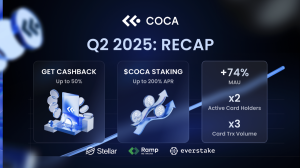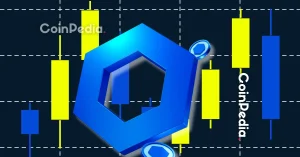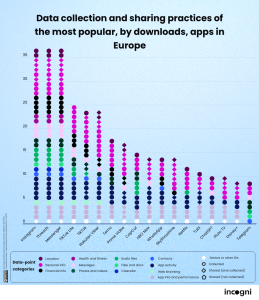Behind the Scenes of Meme Coin Mania

Published exclusively on BeInCrypto, this analysis uses internal Outset PR data from 66 meme coin fundraisers to expose a harsh truth: a handful of projects dominate capital, while the majority struggle to break $1,000/day.
Over the years in crypto PR, I’ve seen countless meme coin projects flood the market with ambitious promises and flashy fundraising campaigns. But real, verifiable data on how these projects perform before launch has always been elusive — hidden behind paywalls, private chats, or simply lost in the noise.
For the first time, I’m sharing exclusive internal statistics from Outset PR’s monitoring — built by tracking the pre-sale dynamics of dozens of emerging projects — to offer an unbiased look into the real state of meme coin fundraising today.
What our data reveals is both fascinating and brutally honest: while a few projects raise millions in days, most struggle to gain real traction — even after weeks of promotion.
Between February and May 2025, meme coin projects raised capital at an average pace of $34,000 per day — but the reality is far more uneven. Half of all projects raised less than $1,100 per day, while the top 5% pulled in over $85,000 daily, capturing the lion’s share of investor attention and liquidity.
Three Meme Coin Fundraising Strategies
Broadly speaking, meme coin projects today rely on one of three main approaches to raise funds during their pre-sale phase:
1. Content-Driven Distribution via Barnacle SEO
This strategy leverages Barnacle SEO — placing content such as press releases, advertorials, or interviews on high-authority media outlets to rank in search engines and appear in organic feeds. By attaching to well-indexed platforms, these campaigns gain visibility without building SEO from scratch — a proven and scalable approach when paired with consistent storytelling.
2. KOL-Based Campaigns
“KOL” stands for Key Opinion Leader — these campaigns gain momentum through influencer-led meme coin promotion and rely heavily on viral memes, timed shoutouts, and community-driven hype. While often effective in the short term, these efforts are harder to measure and typically prioritize visibility over structure.
3. Private, Non-Scalable Outreach
This category includes closed community raises (such as investment-focused DAOs), personal networking, or one-on-one outreach to individual investors. These methods are difficult to scale, hard to monitor, and usually based on anecdotal success stories rather than verifiable performance data.
Methodology: What This Data Covers — and Why It Matters
The data analyzed in this article focuses exclusively on the first fundraising model — measurable campaigns built on Barnacle SEO-driven media traffic. This includes content placed on widely indexed crypto and news websites that generate inbound traffic from organic search and platform recommendations.
We tracked 66 of the most active and visible meme coin projects using this method between late 2024 and early 2025. While this doesn’t cover all pre-sale efforts, it represents a statistically relevant cross-section of the fundraising systems in the meme coin space — and the ones most visible to the broader investor audience.
Among them, a clear trend emerged: the most successful campaigns weren’t just using the method — they executed it with sharper timing, clearer messaging, and stronger early momentum. This aligns with what we’ve observed in real-world campaigns as well: content-driven fundraising, when structured and sustained, remains one of the most scalable and repeatable strategies for pre-launch traction.
Sentiment and Timing: Money Moves Before the Crowd
Between February 10 and May 5, 2025, weekly meme coin fundraising rose from $9.76 million to a peak of $21.45 million, more than doubling over 13 weeks. This wasn’t a simple reaction to market sentiment — it often moved ahead of it.
Weekly Meme Coin Fundraising vs Market Sentiment (Feb–May 2025)
Data sourced from Outset PR’s internal fundraising tracker and Coinrank’s Crypto Fear & Greed Index
As the Crypto Fear & Greed Index hit a low of 15 on March 4, fundraising held strong at $9.52 million, only gradually dropping to a low of $5.15 million by March 17. Despite rising fear, investors continued allocating, suggesting early conviction rather than panic.
While sentiment recovered from 25 to above 50 between late March and late April, weekly fundraising totals were already climbing:
Week ending March 31: $12.24 million
Week ending April 21: $7.89 million
Week ending April 28: $8.56 million
This trend shows that fundraising didn’t lag behind sentiment — it anticipated it.
The week ending May 5 saw both metrics align: the Fear & Greed Index climbed to 57, and fundraising spiked to $21.45 million, its highest point in the quarter.
The bottom line is that in this year’s meme coin market, fundraising often leads sentiment. Early capital tends to flow when fear is at its peak — and exits just as the broader crowd begins to feel confident. It’s a behavioral rhythm where money moves first, before the mood shifts.
Fundraising Behavior: 2024 vs 2025
Comparing weekly meme coin fundraising across 2024 and 2025 reveals a striking behavioral shift — from a reactive, sentiment-driven market to one that shows signs of anticipation and strategic entry.
Weekly Meme Coin Fundraising vs Market Sentiment (Sep–Dec 2024)
Data sourced from Outset PR’s internal fundraising tracker and Coinrank’s Crypto Fear & Greed Index
In 2024, capital flows moved in sync with market sentiment:
Fundraising started weak in September, with weekly volumes between $2.7 million and $6.2 million, mirroring low Fear & Greed Index values (as low as 26).
As the index climbed from 50 to above 80 through October and November, fundraising surged — reaching $34.73M during the week ending November 24, just as sentiment hit 80–90.
This pattern suggests a momentum-driven market, where investors followed optimism and deployed capital only after sentiment turned bullish. The key takeaway for meme coin fundraising in 2024 is that it was reactive — with capital chasing confidence.
In contrast, 2025 tells a different story — one of anticipatory conviction:
The year began with healthy fundraising despite neutral sentiment, and when the Fear & Greed Index plunged to 15 in early March, weekly capital still hovered above $8M.
The fundraising low of $5.15 million occurred before sentiment began to recover. By April, capital inflows were already climbing again — with the final week of this cycle, May 5, hitting $21.45 million alongside a rising index of 57, with early investors buying into uncertainty — not waiting for emotional confirmation.
The Winner-Takes-All Effect
To understand how concentrated meme coin fundraising really is, we analyzed a core segment of the dataset — February through May 2025 — when activity was at its peak. Though the full monitoring period spans from September 2024, this shorter window offers the clearest view of structural capital distribution.
We found that despite a flood of new launches, only a tiny fraction of projects absorb the vast majority of investor funds.
Here’s how the capital broke down:
The top 5 projects captured 65.2% of all funds raised
Projects ranked 6 to 10 took in another 13.4%
The remaining 56 projects shared just 21.4% of all capital combined
Market Concentration of Meme Coin Presale Fundraising (Feb–May 2025). Data sourced from Outset PR’s internal fundraising tracker
This chart tells the story clearly: success in meme coin fundraising is not just rare — it’s radically centralized.
Even though the average project raised $34,000/day during this period, the majority raised less than $1,100/day. Meanwhile, the top 5% raked in over $85,000 daily — pushing the average upward while leaving most behind.
This isn’t just noise — it’s a structural pattern. Much like traditional VC markets, meme coin fundraising behaves as a winner-takes-all system, where early positioning and SEO-driven visibility dictate who raises and who fades.
Final Thought: The Truth Behind the Hype
Meme coin fundraising isn’t a level playing field — it’s a sharply skewed race where a few frontrunners raise millions early, while most projects stall out despite aggressive marketing.
The projects that dominate are the ones that seize momentum before sentiment shifts; the rest are left chasing the wave after it’s already broken.
And while the current meme coin hype cycle may fade, meme coins themselves aren’t going anywhere. They’ll coexist alongside other dominant crypto asset categories — but only those with early conviction, clear positioning, and timing aligned with the market’s rhythm will thrive.
Disclaimer
In compliance with the Trust Project guidelines, this guest expert article presents the author’s perspective and may not necessarily reflect the views of BeInCrypto. BeInCrypto remains committed to transparent reporting and upholding the highest standards of journalism. Readers are advised to verify information independently and consult with a professional before making decisions based on this content. Please note that our Terms and Conditions, Privacy Policy, and Disclaimers have been updated.












